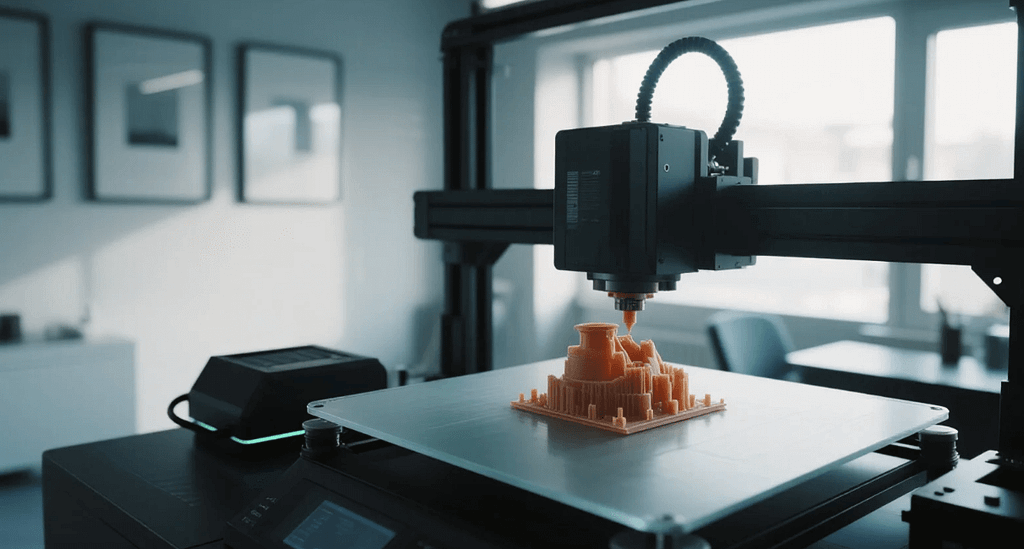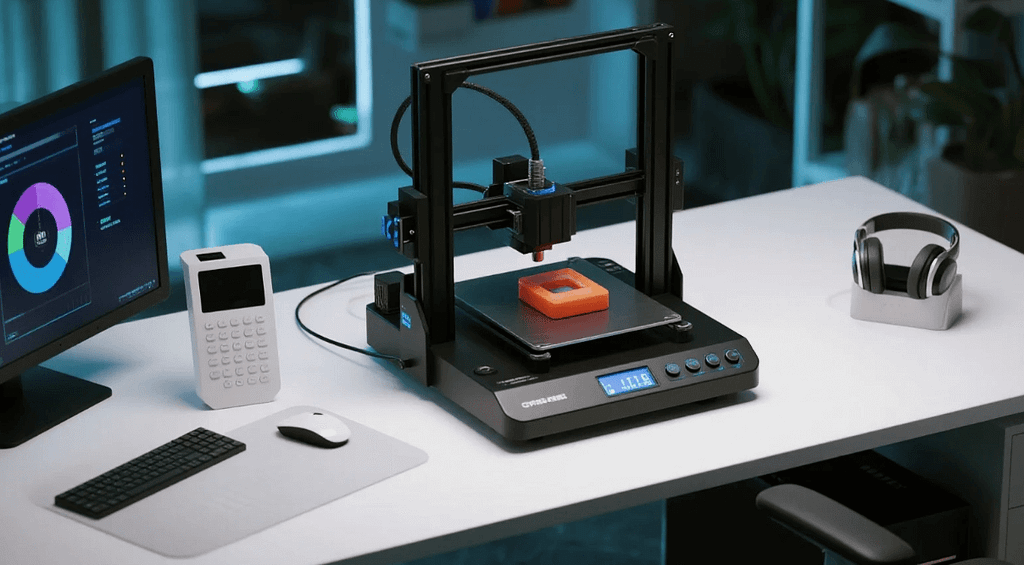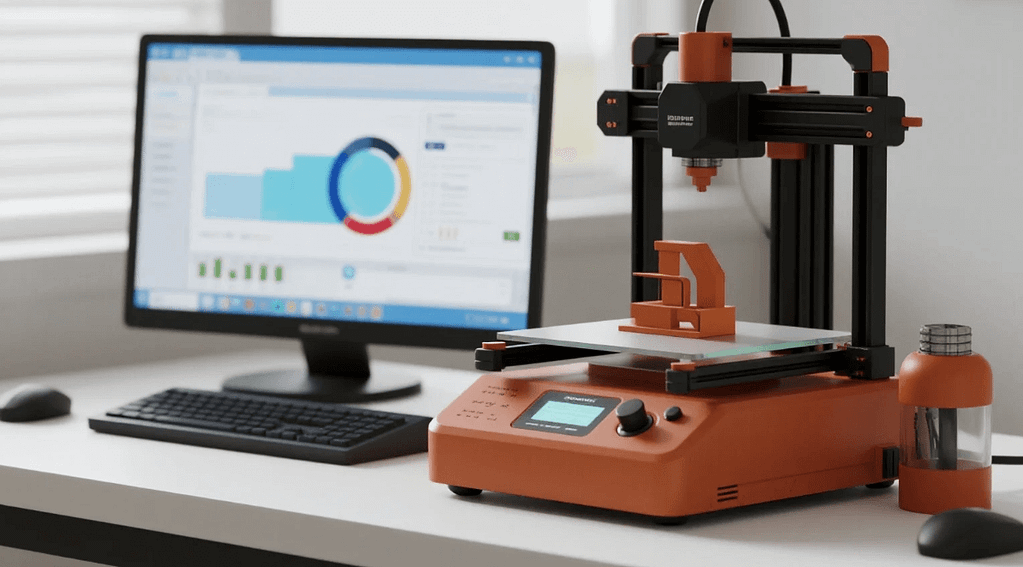In the dynamic landscape of modern manufacturing, the ability to rapidly transform complex digital designs into tangible, high-performance objects is paramount. For centuries, production relied on subtractive methods, removing material to create a part. However, a revolutionary paradigm is now reshaping industries: additive manufacturing 3D printing. This cutting-edge technology builds objects layer by painstaking layer, unlocking unprecedented design freedom, complexity, and customization across a vast array of materials. This article delves into the transformative world of additive manufacturing 3D printing, exploring its fundamental principles, unique advantages, and its profound impact on creating sophisticated industrial models. For businesses, like CAPtec, that require intricate, lightweight, or custom prototypes and functional parts, understanding this pivotal technology is essential for accelerating innovation and maintaining a competitive edge.
Understanding the Power of Additive Manufacturing 3D Printing
A la base, additive manufacturing 3D printing is a process of creating three-dimensional objects by adding material layer by layer from a digital design. Unlike traditional manufacturing, which often involves cutting, drilling, or molding material away, additive manufacturing builds up the product from scratch. This fundamental difference enables the creation of geometries that are frequently impossible to achieve with conventional manufacturing techniques, making it a truly disruptive force across diverse industries. It’s not just about making parts; it’s about making better, more complex, and more customized parts.
Key Processes Within Additive Manufacturing 3D Printing

While the overarching concept of additive manufacturing 3D printing involves building layer by layer, several distinct technologies achieve this, each with its unique mechanisms, material capabilities, and ideal applications.
1. Material Extrusion (e.g., Fused Deposition Modeling – FDM)
This is perhaps the most widely recognized form of additive manufacturing 3D printing. It involves melting and extruding thermoplastic filament, layer by layer, onto a build platform to create the desired object.
- How it Works: A spool of thermoplastic filament (like ABS, PLA, PETG) is fed into a heated extruder nozzle. The nozzle melts the plastic and precisely deposits it onto the build plate, following the digital model’s cross-section. Each subsequent layer adheres to the one below it, gradually forming the 3D object.
- Applications: FDM is popular for rapid prototyping, functional testing, jigs and fixtures, and even some end-use parts where high precision isn’t the absolute top priority. It’s known for its accessibility and wide material range.
2. Vat Photopolymerization (e.g., Stereolithography – SLA, Digital Light Processing – DLP)
These technologies use a liquid photopolymer resin that cures (hardens) when exposed to a specific light source.
- SLA: A laser beam selectively cures layers of resin in a vat, tracing the part’s cross-section. The build platform then lowers, and a new layer of resin is exposed, repeating until the part is complete. SLA is renowned for its exceptional surface finish, fine features, and high accuracy, making it excellent for visual prototypes and detailed models.
- DLP: Similar to SLA, but DLP uses a digital projector to flash an entire layer’s image at once, curing the resin much faster. This results in quicker print times, particularly for larger parts or multiple parts simultaneously, while maintaining high resolution.
- Applications: Both SLA and DLP are ideal for highly detailed prototypes, master patterns for molding, jewelry, dental models, and intricate, aesthetic industrial models.
3. Powder Bed Fusion (PBF) (e.g., Selective Laser Sintering – SLS, Selective Laser Melting – SLM)
These processes use a powerful energy source to selectively fuse or melt powdered materials, layer by layer.
- SLS: A laser selectively sinters (fuses without fully melting) polymer powder particles together. After a layer is complete, a new layer of powder is spread. Un-sintered powder supports the part during printing, eliminating the need for separate support structures. SLS parts offer good mechanical properties and are suitable for functional prototypes and end-use parts.
- SLM (for metals): A high-power laser fully melts and fuses metal powder, creating dense, strong metal parts.
- Applications: SLS is widely used for functional prototypes, complex jigs and fixtures, and low-to-medium volume production of plastic components. SLM is crucial for high-performance metal parts in aerospace, medical, and automotive sectors.
4. Binder Jetting
This method involves a liquid binding agent selectively joining powdered material (metal, sand, ceramics) particles, layer by layer.
- How it Works: After a thin layer of powder is spread, an inkjet printhead precisely deposits a liquid binder onto the powder bed, creating the cross-section of the part. Once the “green” part is fully printed, it undergoes a critical post-processing step (often sintering for metals or curing for sand) to achieve its final strength and density.
- Applications: Binder jetting is known for its high speed, large build volumes, and cost-effectiveness for metal parts, sand casting molds, and even full-color models.
5. Material Jetting (e.g., PolyJet, MultiJet Printing – MJP)
These technologies are similar to inkjet printing, but instead of ink, they jet liquid photopolymer droplets that are immediately cured by UV light.
- How it Works: Printheads jet thousands of tiny droplets of photopolymer material onto a build tray, creating ultra-thin layers. A UV lamp cures these droplets instantly. This allows for multi-material printing (different colors, rigid and flexible materials in one part) and highly detailed, smooth parts.
- Applications: Ideal for highly realistic visual prototypes, multi-material models, medical models, and overmolded parts, offering exceptional surface finish and color capabilities.
The Transformative Advantages of Additive Manufacturing 3D Printing

For businesses, integrating additive manufacturing 3D printing into their capabilities or partnering with a specialist offers a multitude of compelling benefits that push the boundaries of design, production, and innovation.
Unprecedented Design Freedom and Geometric Complexity
The most revolutionary aspect of additive manufacturing 3D printing is its ability to create geometries that are virtually impossible or cost-prohibitive with traditional manufacturing methods. This includes:
- Complex Internal Structures: Think intricate lattice structures for lightweighting, internal cooling channels that follow complex paths, or integrated features that would traditionally require multiple components and assembly steps.
- Organic and Freeform Shapes: Mimicking natural forms for optimized performance, such as bionic designs for strength and weight reduction, or highly aesthetic consumer product designs.
- Part Consolidation: Combining multiple components of an assembly into a single, integrated 3D-printed part. This dramatically reduces part count, simplifies supply chains, minimizes assembly time, and significantly reduces potential points of failure, leading to improved overall product integrity.
Rapid Prototyping and Accelerated Product Development
Additive manufacturing 3D printing dramatically accelerates the design and prototyping cycle. Designers can go from a CAD model to a physical object in hours or days, allowing for rapid iteration and validation of designs. This agility means:
- Faster Iterations: Engineers can quickly test multiple design variations, gathering critical feedback and making improvements at an unprecedented pace. This iterative loop is crucial for optimizing designs.
- Reduced Time to Market: Accelerating the prototyping and validation phases directly translates to faster product launches, giving businesses a significant competitive edge in rapidly changing markets.
- Cost-Effective Prototypes: For complex, low-volume prototypes across various materials (plastics, metals, composites), 3D printing is often more cost-effective than traditional methods, as it eliminates the need for expensive tooling or extensive machine setup.
Customization and On-Demand Manufacturing
Additive manufacturing 3D printing inherently supports high levels of customization without incurring additional tooling costs or complex reconfigurations. This makes it ideal for:
- Mass Customization: Producing unique versions of a product for individual customers (e.g., custom medical implants perfectly fitted to a patient’s anatomy, or bespoke consumer products).
- Low-Volume Production: Economically manufacturing small batches of specialized additive manufacturing 3D printing, highly customized products, or replacement components for legacy systems where traditional manufacturing would be prohibitively expensive.
- On-Demand Production: Creating parts only when they are needed, reducing inventory costs, minimizing waste, and offering greater supply chain flexibility, especially for spare parts.
Material Versatility for Diverse Applications
While the process is complex, additive manufacturing 3D printing supports an ever-growing range of materials, enabling its use across various industries:
- Plastics: A vast array of thermoplastics (ABS, PLA, Nylon, PEKK) and thermosets (resins for SLA/DLP), offering different mechanical properties like flexibility, rigidity, or transparency.
- Metals: High-performance metal alloys (stainless steels, titanium, nickel-based superalloys, aluminum) for strong, durable components.
- Composites: Materials reinforced with carbon fiber or glass fiber for enhanced strength-to-weight ratios.
- Ceramics: For high-temperature applications or biocompatibility.
This extensive material versatility allows for the selection of materials with specific mechanical, thermal, chemical, and even aesthetic properties tailored to the demanding requirements of various industries.
The Transformative Impact on Precision Industrial Models
For companies like CAPtec that provide precision industrial model services, additive manufacturing 3D printing represents a pivotal advancement. Its capabilities are profoundly reshaping how high-fidelity prototypes and functional models are developed and validated across various materials.
Unlocking Unprecedented Complexity in Prototypes
Traditional methods often limit the complexity of early-stage prototypes due to manufacturing constraints and cost. Additive manufacturing 3D printing removes these barriers, allowing industrial models to embody even the most intricate features, internal channels, and lightweight lattice structures directly from the CAD design. This means engineers can prototype and test revolutionary designs that were previously purely conceptual, significantly expanding the scope of innovation. For example, a fluid dynamics model for a new pump could be printed with incredibly complex internal geometries to precisely simulate flow and pressure distribution.
Accelerating Functional Validation with Production-Representative Models
The ability of additive manufacturing 3D printing to work with a range of engineering-grade materials means industrial models can be created from materials that closely mimic or are identical to the final production materials (e.g., engineering plastics or even metals). This is critical for accurate functional testing. Prototypes can undergo rigorous stress tests, thermal cycles, and performance evaluations that truly reflect real-world conditions. This provides highly reliable data for design refinement and helps ensure the longevity and optimal performance of the end product, proving invaluable for critical applications.
Bridging the Gap Between Design and Production Realities
Additive manufacturing 3D printing helps bridge the gap between theoretical design and practical manufacturing reality. Industrial models produced via this method offer a tangible representation that can be physically inspected, assembled, and tested, revealing any unforeseen issues or interferences before costly mass production tooling is committed. This iterative process, facilitated by rapid prototyping, drastically reduces the risk of expensive design flaws surfacing late in the development cycle, saving significant time, money, and resources.
Customization and Low-Volume Functional Prototypes
For highly specialized industrial models, or for creating very low volumes of functional prototypes, additive manufacturing 3D printing is exceptionally cost-effective. It eliminates the need for expensive and time-consuming custom tooling often required by traditional manufacturing processes. This flexibility allows for unique, one-off prototypes or small batches of highly specialized components to be produced on demand, empowering niche applications and highly customized product development that would otherwise be impossible or financially unfeasible.
Choosing a Partner for Additive Manufacturing 3D Printing

When considering additive manufacturing 3D printing services for your precision industrial models or functional parts, selecting the right partner is paramount for successful outcomes.
Deep Expertise Across Diverse AM Technologies
Look for a provider with extensive experience across various additive manufacturing 3D printing technologies (e.g., FDM, SLA, SLS, SLM, Binder Jetting) and a deep understanding of the materials associated with each process. Their expertise in DfAM (Design for Additive Manufacturing) will be invaluable for optimizing your designs for the chosen process.
State-of-the-Art Equipment and Robust Quality Control
Ensure the service provider utilizes modern, well-maintained 3D printing machines capable of producing high-quality, accurate parts. They should also have robust in-process monitoring and comprehensive metrology capabilities for post-print inspection and verification. Adherence to industry-specific quality standards is crucial for reliable results.
Collaborative Design and Engineering Support
An ideal partner will not merely “print” your files but will offer genuine collaborative support. This includes providing expert DfAM feedback, suggesting optimal materials and processes, and working with your team to refine designs for additive manufacturing, maximizing performance and cost-effectiveness.
Proven Track Record and Material Versatility
Investigate their experience with similar projects and their ability to work with the specific materials you require for your application. A strong portfolio, client testimonials, and industry recognition are good indicators of their capabilities and reliability.
The Future Landscape of Additive Manufacturing 3D Printing and Industrial Models
The field of additive manufacturing 3D printing is experiencing explosive growth and continuous innovation. We can anticipate even greater speed and larger build volumes, further refinement of surface finishes directly from the printer, and the development of new, more exotic materials specifically optimized for additive processes. Multi-material printing capabilities, allowing different materials (e.g., rigid and flexible, or even different metals) to be integrated into a single part, are also rapidly advancing. For industrial models, this means even faster turnaround times for complex prototypes, the ability to create models with unprecedented detail and functional accuracy, and an increasing blurring of the lines between prototyping and end-use part production. The unwavering pursuit of efficiency, sustainability, and technological advancement will continue to drive this revolutionary manufacturing method forward.
Conclusion
Additive manufacturing 3D printing is rapidly becoming an indispensable tool in modern manufacturing, particularly for applications demanding high complexity, performance, and customization. Its ability to produce intricate, lightweight, and robust parts layer by layer offers a compelling alternative to traditional methods. For businesses focused on precision industrial model services, leveraging this transformative technology allows for unprecedented design freedom, accelerated functional validation with real materials, and a faster path from concept to market. By understanding the profound capabilities of additive manufacturing 3D printing, companies can embrace innovation, unlock new design possibilities, and solidify their position at the forefront of their respective industries. It is truly shaping the future of product creation.
FAQ
Q1: What is the primary difference between additive and traditional manufacturing?
A1: The primary difference is that additive manufacturing 3D printing builds objects by adding material layer by layer, while traditional manufacturing (subtractive) removes material from a larger block to create the desired shape.
Q2: What types of materials can be used in additive manufacturing 3D printing?
A2: A wide range of materials can be used, including various plastics (thermoplastics and resins), metals (stainless steels, titanium, superalloys), composites, and even some ceramics, depending on the specific 3D printing technology.
Q3: How does additive manufacturing 3D printing benefit precision industrial models?
Q3: It allows for the creation of highly complex and customized prototypes using production-representative materials, enabling rigorous functional testing, accelerating design validation, and reducing the time and cost of product development.
Q4: What are some common applications of additive manufacturing 3D printing in industries?
Q4: Common applications include rapid prototyping, creation of functional parts, tooling and fixtures, medical devices (implants, prosthetics), aerospace components, and customized consumer products.
Q5: Is additive manufacturing 3D printing only for prototyping, or can it be used for end-use parts?
Q5: While widely used for prototyping, additive manufacturing 3D printing is increasingly used for producing end-use parts, especially for complex geometries, low-volume production, or parts that benefit from lightweighting and intricate internal structures.
Q6: What is “Design for Additive Manufacturing” (DfAM)?
Q6: DfAM is a design philosophy that optimizes parts specifically for additive manufacturing processes, leveraging unique capabilities like complex internal geometries, part consolidation, and lattice structures to improve performance and efficiency.
Q7: How does additive manufacturing 3D printing impact product development time?
Q7: It significantly reduces product development time by enabling rapid iteration of designs, allowing engineers to quickly test and refine prototypes, which accelerates feedback loops and brings products to market faster.